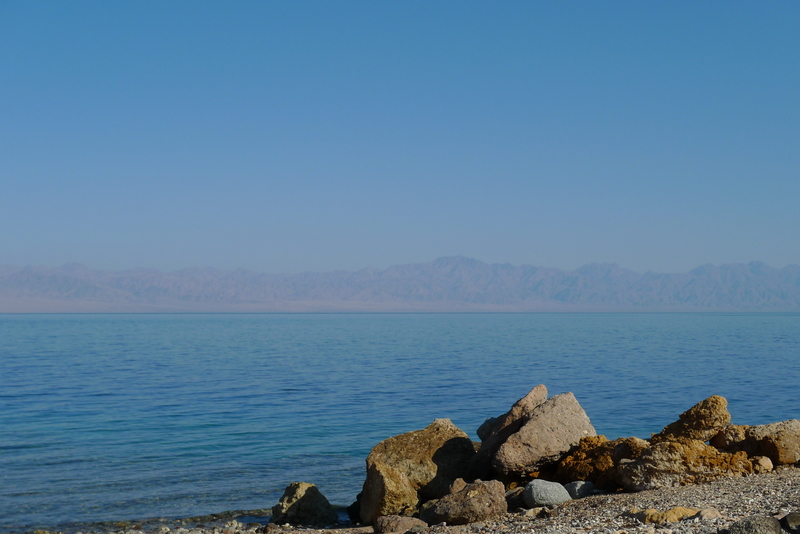In its latest move to diversify away from oil, Saudi Arabia has announced an ambitious plan to turn a vast area of its western Red Sea coast into a tourism hot spot featuring 50 pristine islands, white sandy beaches, and pre-Islamic history and culture.
Called the Red Sea Project, the plan launched by the young Crown Prince Muhammad Bin Salman last week envisages a dedicated new airport and sea port to draw high-end sun and culture seekers to an area covering some 34,000 square kilometres – an area bigger than Belgium – on the Red Sea coast between the cities of Umluj and Al Wajh.
Attractions will include a protected nature reserve, coral reefs, the extinct volcanoes of Harrat Al-Rahat and, inland, the ruins of of Madain Saleh (pictured above), a Unesco World Heritage Site with structures dating to the pre-Islamic Nabatean Kingdom of the 1st century AD.
“Heritage sites will … be restored on a scientific basis to be ready for visitors,” reported the Saudi Gazette.
If you can’t change restrictions on alcohol and dress, that market effectively disappears– Crispin Hawes, Teneo Intelligence
Funded by the kingdom’s Public Investment Fund, which is chaired by the 31-year-old Bin Salman, the Red Sea Project will try and lure international hotel companies to build seaside resorts on the coast and pristine islands.
The scheme is expected to create 35,000 jobs and inject annual revenues of $4bn (15 billion riyals) into the Saudi economy when it is “up and running”, according to a government statement on the project sent to Bloomberg.
On 1 August the official Saudi Press Agency said: “The foundation will be laid in the third quarter of 2019 and the first phase will be completed in the last quarter of 2022, a time which will see the development of the airport, the port, the development of hotels and luxury residences, the completion of facilities and infrastructure, and transport services (boats, water jets, etc.).”
What about alcohol?
The Saudi Gazette notes that tourism is a key plank of the kingdom’s “Vision 2030” economic plan launched by Bin Salman in April 2016. While tourism in Saudi Arabia now revolves almost exclusively around Islamic religious pilgrimages, the Red Sea Project “will contribute to a qualitative shift in the concept of tourism and hospitality”, the Gazette said.
Analysts, however, are asking whether the strictly Muslim country will relax rules on alcohol and dress in order to cater for the international tourism market, as Egypt has done on the other side of the Red Sea.
“If you can’t change restrictions on alcohol and dress, that market effectively disappears,” Crispin Hawes, London-based managing director at Teneo Intelligence, told Bloomberg. He added that the government will need to “get through the cultural and legal hurdles”.
The question will be a test for the energetic and reform-minded Bin Salman, who was unexpectedly elevated to the position of crown prince in June this year by his father King Salman. That move deposed the incumbent crown prince Mohammed bin Nayef, King Salman’s nephew, in a departure from Saudi dynastic precedent.

Saudi Arabia’s undeveloped mountainous Red Sea coast glimpsed from Egypt’s Sinai Peninsula (Leonid Spektor/Dreamstime)
But Bin Salman’s plan won the public backing of the kingdom’s Minister of Culture and Information, Dr. Awad bin Saleh Al-Awad, who stated through the official press agency that “this project represents great addition to the development and renaissance projects in our country”.
Cities in the sand
Equally challenging for the crown prince will be just getting the project phases built and making it all pay. Saudi Arabia has attempted the wholesale implantation of new economic sectors by the construction of new “cities” in the desert since 2005, with limited success so far.
Chief among these is King Abdullah Economic City (KAEC). Launched in 2005 on the Red Sea coast north of Jeddah, this development, with a planned completed area of some 170 square kilometres, was intended to attract a flood of global business to its industrial, financial and logistics hubs, but inward investment so far has amounted only to a trickle, with many companies setting up there coming from Saudi Arabia itself.
Another is the King Abdullah Financial District (KAFD), intended to rival the Dubai International Financial Centre by luring banks and other financial-services firms. Under construction north of Riyadh since 2006, the complex is 70% complete but as of last April, not a single financial institution had agreed to take space in the 73 buildings rising from the sand, Bloomberg reported.
Bin Salman acknowledged the problem in his Vision 2030 blueprint of last year. “We are aware that the economic cities of the last decade did not realize their potential,” it said. “Work has halted in several cities, and others face challenges that threaten their viability.” It said the government would work to “salvage” and “revamp” economic city projects launched over the past decade.
The country has not stopped starting new ones, however, and tourism seems to be the new focus. In April Saudi Arabia announced plans to build a 334-sq-km “entertainment city” on the outskirts of Riyadh that will provide facilities for sports, culture and recreation. Among the attractions will be a safari and a theme park designed by Texan entertainment company Six Flags.
Top image: Qasr al Farid, a tomb at the pre-Islamic archeological site of Madain Saleh, Saudi Arabia (Richard.hargas/Creative Commons)
Further Reading:










